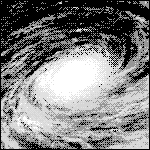- Car Hater
- May 7, 2007
-

wolf. bike.
Wolf. Bike.
Wolf! Bike!
WolfBike!
WolfBike!
ARROOOOOO!
|
I am a hooting gibbon and I love thread
Will you stand by and watch this happen???
Hoot
|
 #
?
May 6, 2023 02:27
#
?
May 6, 2023 02:27
|
|
- Adbot
-
ADBOT LOVES YOU
|

|
|
#
?
Jun 8, 2024 21:38
|
|
- Stinky Wizzleteats
- Nov 26, 2015
-

My bird blood is ethically sourced.
|
it what breaks me down so bad I had to become a beast
|
 #
?
May 6, 2023 03:22
#
?
May 6, 2023 03:22
|
|
- Wakko
- Jun 9, 2002
-
Faboo!
|
It's always the reminders that we're in the middle of an extinction event that hurt the most.
i know it's tough, but with our collective hard work we can help accelerate to the end
|
 #
?
May 6, 2023 03:44
#
?
May 6, 2023 03:44
|
|
- TehSaurus
- Jun 12, 2006
-

|
Point
|
 #
?
May 6, 2023 08:54
#
?
May 6, 2023 08:54
|
|
- Zodium
- Jun 19, 2004
-

|
the english version is Marx in the Anthropocene.
|
 #
?
May 6, 2023 21:17
#
?
May 6, 2023 21:17
|
|
- Stereotype
- Apr 24, 2010
-

-
College Slice
|
it's true, it's not an emergency anymore. "an unforeseen combination of circumstances or the resulting state that calls for immediate action." it isn't unforeseen anymore and also it's too late to do anything, so no action required
|
 #
?
May 6, 2023 21:46
#
?
May 6, 2023 21:46
|
|
- kater
- Nov 16, 2010
-

|
continued climate conundrum
|
 #
?
May 6, 2023 22:34
#
?
May 6, 2023 22:34
|
|
- Fell Mood
- Jul 2, 2022
-

A terrible Fell look!
|
So many dead birds in my area this week.
|
 #
?
May 6, 2023 22:39
#
?
May 6, 2023 22:39
|
|
- Erghh
- Sep 24, 2007
-

"Let him speak!"
|
it's the first week of may https://www.cbc.ca/news/canada/edmonton/alberta-wildfires-evacuations-1.6834665
quote:
The current wildfire situation in Alberta is an "unprecedented crisis", premier Danielle Smith said Saturday.
Nearly 25,000 Albertans have been forced from their homes as wildfires continue to rage in north and central Alberta, while 5,200 residents are on evacuation alert.
The number of active fires is sitting at 103 as of 9:30 a.m. Saturday, as hot and dry conditions led to fast-spreading wildfires that threatened homes, businesses and lives.
Close to 122,000 hectares of land have burned, and the federal government is on standby to help, if needed, Smith said.
"It's a high danger time, but I do have to say this year is significantly higher as far as hectares burned than we've seen in the last five years," wildfire information officer Christie Tucker said during the media briefing.
Yesterday was particularly bad in terms of conditions, she said.
"We were expecting extreme wildfire behaviour yesterday with the conditions that we were seeing and that's what we got," she said
Tucker said that on average, the total hectares burned at this time of year usually sits at around 800.
|
 #
?
May 6, 2023 22:40
#
?
May 6, 2023 22:40
|
|
- silicone thrills
- Jan 9, 2008
-

I paint things
|
I was just on the edge of posting about this. A friend of mine lives up that way and was posting pictures of all the burned out land this morning. Absolutely insane
|
 #
?
May 6, 2023 22:42
#
?
May 6, 2023 22:42
|
|
- Mayor Dave
- Feb 20, 2009
-

Bernie the Snow Clown
|
Decided to reread Cadillac Desert and oh boy does that book hit, it's incredible and hard to believe it was written 45 years ago
|
 #
?
May 7, 2023 02:12
#
?
May 7, 2023 02:12
|
|
- OIL PANIC
- Dec 22, 2022
-

CAUTIONS
...
4. ... (If the battery is exhausted, the display of the liquid crystal will become vague and difficult to look at.)
...
7. Do not use volatile oils such as thinner or benzine and alcohol for wiping.
|
interesting essay collection that just came out this year. lmk if any of these sound interesting to y'all.
The Environmental Apocalypse: Interdisciplinary Reflections on the Climate Crisis (Jakub Kowalewski, ed.) posted:Part 1 explores the multiple ways in which the environmental apocalypse can be framed conceptually.
The opening chapter by Omar Rafael Regalado Fernandez demonstrates, somewhat counter-intuitively, that climate apocalypse could be understood as a scientific category. On Fernandez's reading, climate apocalypse is a concept situated within a long history of catastrophism - a theoretical position which emerges during the Renaissance and the Enlightenment to explain geological changes. Fernandez's chapter then explores the relation between scientific (neo) catastrophism and eco-political debates in the Global North and the Global South, respectively.
The second chapter, [by Jakub Kowalewski], responds to a decolonial critique of climate apocalypticism - specifically, the chagre that eco-apocalyptic discourses operate with a Western-centric model of time inherited from Christian eschatology. [Kowalewski] turns to medieval and contemporary apocalyptic texts in order to show that eco-eschatological time can take different "shapes," and that, consequently, eco-apocalypticism doesn't necessarily commit one to a Western-centric temporality. In fact, as I suggest, climate apocalypticism can be useful for a decolonial project.
Elizabeth Pyne's chapter explores the presence of apocalyptic queer negativity in ecological debates. Her argument is powerfully centred on the figure of the child as it ambivalently functions in modern environmental discourses. Such a focus allows Pyne to identify the forms of negation traversing our representations of the future symbolised by the figure of the child, and to question the theoretical commitments of various eco-social critiques concerned with futurity. Throughout the chapter, Pyne defends the importance of apocalyptic queer negativity for both ecological thought and activism.
In the following chapter, Jonathan Catlin advances a notion of "slow catastrophe," which, as he argues, enables us to avoid both naÔve optimism and unnecessary fatalism in the face of climate disaster. Drawing on the writings of various critical theorists - most notably Walter Benjamin and Theodor Adorno - Catlin demonstrates how a "slow catastrophe" can highlight the imperceptible and prolonged effects of climate change while also motivating solutions to punctual disasters generated by the structural crisis. Catlin's chapter, therefore, makes an important conceptual contribution to critical theory, which, by avoiding the extremes of ungrounded confidence and pessimism, has the potential to inform effective environmental politics.
Marita Furehaug concludes Part 1 with a chapter on environmentalism and Islamic eschatology. Furehaug shows how Qur'anic representations of the apocalypse can help us rethink notions such as free will, human agency, and accountability. In addition to her theoretical analysis, Furehaug also examines the ways in which apocalypticism finds its expression in Muslim ecological activisim. Her chapter, therefore, sketches a theology, and ethics, and a practice of Islamic ecoi-eschatology.
Part 2 focuses on the representations of the environmental apocalypse.
Andrew Patrizio's chapter examines the role apocalypticism has played in visual art since the 1960's. Patrizio offers a topology of apocalyptic art according to four categories of the apocalypse: extinction, mineral, marine, and nuclear. Such a mapping enables him to argue that the visualisation of the climate disaster has an overall disappointing character. Importantly, on Patrizio's reading the disappointment inherent in apocalyptic art can stimulate a productive engagement with our contemporary condition.
In the following chapter, Francesca Laura Cavallo offers a study of the sociopolitical functions of disaster how-to guides. She traces the history of the survival manuals from the Cold War up to the modern day. Cavallo's historical analysis allows her to explore the role and significance of coping with global catastrophes through action plans and straightforward images and to examine the different types of political strategies which emerge from the guidebooks for how to avoid the apocalypse.
Sarah France's chapter focuses on the works of fiction set before extinction events. These texts contain secular apocalyptic narratives which dispose of any promise of anticipated survival or redemption evocative of religious apocalypticism. For France, the impossibility of narrative closure found in pre-extinction fiction provides a means to critique "techno-utopian" approaches to climate disaster. Simultaneously, France offers a compelling account of how the representations of non-survivable extinction events can produce a type of planetary grief capable of informing productive responses to the eco-apocalypse.
The final chapter of Part 2, by Lindsay Atnip, ofters a fascinating reading of Herman Melville's Moby-Dick, Cormac McCarthy's Blood Meridian, and the latter's unpublished screenplay "Whales and Men." Atnip's exegesis leads her to suggest that the environmental apocalypse is bound up with the transgression of normative and material human limits. Importantly for Atnip, the works of Melville and McCarthy suggest a possibility of a new form of consciousness responsive to the magnitude of our environment and aware of our limitations.
Part 3 examines the ethical consequences of the environmental apocalypse.
In his chapter, Simon Thornton engages with the works of William T. Vollmann and SÝren Kierkegaard in order to identify three kinds of climate guilt: ethical guilt, which follows one's responsibility for the environmental crisis; tragic guilt, which involves a paradoxical experience of being and not being guilty; and apocalyptic guilt, which is generated by a possibility that one's life might be erroneous and yet which one might never be able to grasp. Overall, Thornton's chapter offers a captivating account of the normative role affectivity has been playing during the climate disaster.
Stefan Skrimshire asks how our moral responsibilities to present and future generations are affected by the possibility of human extinction. In his answer, Skrimshire successfully brings together two kinds of approaches: on the one hand, he explores the philosophical issues related to the ethics of apocalyptic scenarios: on the other hand, he draws on Jewish and Christian apocalyptic texts in order to investigate the possibility of an alternative morality for the end of the world.
Robert G. Seymour concludes Part 3 by critically reconstructing the environmental ethics of Hans Jonas. As Seymour makes clear, for Jonas technological developments effect concomitant changes in human agency. This, in turn, demands of us a rethinking of our moral systems in light of the new possibilities opened by technology -- most importantly, the possibility of a future destruction of life. Seymour's chapter offers an insightful analysis of Jonas' attempt to identify forms of normativity compatible with our modern condition.
Part 4 aims to think beyond the environmental apocalypse.
Timothy Secret's chapter questions the extent to which psychoanalysis can provide a means to effectively engage with the climate crisis. For Secret, the failure of psychoanalysis lies in its commitment to a metaphysical and counterproductive concept of "proper death" found on a larger scale in eco-apocalypticism. In order to propose an alternative model of the end capable of a constructive influence on environmentalism, Secret turns to the works of Xavier Bichat. The latter's vitalism can supplement the psychoanalytic approach by offering a non-metaphysical and thus productive notion of death -- neither "proper" nor apocalyptic.
In the following chapter, inspired by the messianic gesture of wiping away the tears of Esau found in the Zohar (Esau symbolising here a superseded yet consoled natural world), Agata Bielik-Robson suggests a novel possibility of theorising humanity's reconciliation with nature. To this end, she interprets Theodor Adorno and Emmanuel Levinas as neo-humanists for whom doing justice to the natural world involves maintaining the anthropological difference between humanity and its "other".
Vinita Damodaran concludes Part 4 -- and the volume -- by contrasting the environmental history of colonial powers with that of India's tribal communities. Damodoran argues that colonial responses to the environmental crisis -- in analogy with contemporary top-down solutions to climate change -- have failed to tackle the root cause of the problem, namely, capitalism. The alternative, for Damodaran, lies in the bottom-up environmental strategies found in the history of India's tribal communities, which can inform eco-apocalyptic arguments by pointing towards emancipatory futures.
|
 #
?
May 7, 2023 02:13
#
?
May 7, 2023 02:13
|
|
- Eason the Fifth
- Apr 9, 2020
-

|
Death to academia
|
 #
?
May 7, 2023 02:20
#
?
May 7, 2023 02:20
|
|
- Stereotype
- Apr 24, 2010
-

-
College Slice
|
Decided to reread Cadillac Desert and oh boy does that book hit, it's incredible and hard to believe it was written 45 years ago
yeah, it would be way worse if we also hadnít done anything in the past 45 years to fix things. good thing we have!
|
 #
?
May 7, 2023 04:58
#
?
May 7, 2023 04:58
|
|
- Stereotype
- Apr 24, 2010
-

-
College Slice
|
hmm i'm being told the things we did actually made things worse and didn't fix anything. bummer
|
 #
?
May 7, 2023 05:32
#
?
May 7, 2023 05:32
|
|
- Xaris
- Jul 25, 2006
-

Lucky there's a family guy
Lucky there's a man who positively can do
All the things that make us
Laugh and cry
|
i heard about this large carbon capture facility in iceland. sounds like a good idea, they probably only need to build a couple more to turn things around
|
 #
?
May 7, 2023 05:40
#
?
May 7, 2023 05:40
|
|
- Stereotype
- Apr 24, 2010
-

-
College Slice
|
i heard about this large carbon capture facility in iceland. sounds like a good idea, they probably only need to build a couple more to turn things around
yeah we only need to build five thousand more
|
 #
?
May 7, 2023 05:44
#
?
May 7, 2023 05:44
|
|
- Fell Mood
- Jul 2, 2022
-

A terrible Fell look!
|
I'm a humble man. We all deserve the credit.
|
 #
?
May 7, 2023 05:46
#
?
May 7, 2023 05:46
|
|
- Stereotype
- Apr 24, 2010
-

-
College Slice
|
as a reference for how many carbon capture facilities we need to build to break even on carbon emissions: there are 3,400 power plants in the united states. so we need to build 1.5 carbon capture facilities for every single power plant in the nation. we built a few dozen though, so i'm sure we've got it
|
 #
?
May 7, 2023 05:48
#
?
May 7, 2023 05:48
|
|
- Struensee
- Nov 9, 2011
-

|
I would have actually expected it to take orders of magnitude more energy to capture
|
 #
?
May 7, 2023 06:18
#
?
May 7, 2023 06:18
|
|
- Stereotype
- Apr 24, 2010
-

-
College Slice
|
I would have actually expected it to take orders of magnitude more energy to capture
Iím sure theyíre omitting some huge amount of energy usage. because who would fund them if they took more energy than they could reasonably capture in co2? they definitely arenít including construction costs and theyíre not at all scalable and itís such an obvious pipe dream.
|
 #
?
May 7, 2023 06:26
#
?
May 7, 2023 06:26
|
|
- kaxman
- Jan 15, 2003
-

|
yeah we only need to build five thousand more
From what I've seen the Iceland plant fully operational is supposed to pull 40,000 tons of carbon out. 5000 of those would slurp up 200 million tons which is like point 6 percent of global emissions. So i guess we could reduce emissions by 95% and build 50,000 plants. Or we could just build a million plants and do whatever. More like two million since i guess they need power too.
Kinda fucks my brain to think of a million of anything, really. One carbon capture plant for every eight thousand people. Can that possibly be right? We do seem to be farting a lot of carbon dioxide into the air.
|
 #
?
May 7, 2023 08:36
#
?
May 7, 2023 08:36
|
|
- Thorn Wishes Talon
- Oct 18, 2014
-

by Fluffdaddy
|
as a reference for how many carbon capture facilities we need to build to break even on carbon emissions: there are 3,400 power plants in the united states. so we need to build 1.5 carbon capture facilities for every single power plant in the nation. we built a few dozen though, so i'm sure we've got it
1.5 carbon capture facility per power plant seems... rather low? Are you sure your math is correct?
Also, my understanding is that the primary issue with carbon capture facilities is that they are really only viable in specific places, i.e. they require plenty of clean energy generation nearby, and no other contenders for that energy. The one in island for instance is powered by thermal power that is abundant and in surplus. Such locations are very limited in number, at least for now.
|
 #
?
May 7, 2023 08:55
#
?
May 7, 2023 08:55
|
|
- toggle
- Nov 7, 2005
-

|
plants love co2 though?
|
 #
?
May 7, 2023 09:44
#
?
May 7, 2023 09:44
|
|
- Confusedslight
- Jan 9, 2020
-
|
Does anyone know of any good youtube channels/documentaries that are worth checking out that share a similar vibe to this thread?
|
 #
?
May 7, 2023 10:17
#
?
May 7, 2023 10:17
|
|
- Adbot
-
ADBOT LOVES YOU
|

|
|
#
?
Jun 8, 2024 21:38
|
|


















































